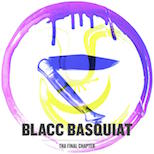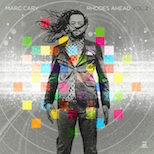Director Jeff Broadway Speaks On New Doc “Our Vinyl Weighs A Ton: This Is Stones Throw Records”
04.08.2014
MUSIC
It’s always great to view a film or read a story that’s authentic, fully accurate, and captivating enough to hold our limited attention spans. Documentaries serve as a multi-sensory novel in which the viewer can gain insight on both the leading and behind-the-scenes figures. Such aforesaid statements apply to filmmaker Jeff Broadway’s release of Our Vinyl Weighs A Ton: This Is Stones Throw Records (DVD release 5/27/14). The film tells the story of founder Peanut Butter Wolf and the inception of his LA based label, Stones Throw Records. The poignant, yet inspiring piece of art gives music connoisseurs the ins’ of the label and even enlists the viewpoints of hip hop heavies such as Common, A-Trak, Kanye West, along with a host of others. It’s a story that has a heartrending start, but a positive ongoing “ending” – in which Wolf is a walking testimony to the fact that tragedy can never tarnish your dreams. This isn’t Jeff’s first go at producing a moving and well-crafted music documentary. Prior to capturing the story of Stones Throw Records, he along with fellow producer Rob Bralver, joined forces on Cure for Pain: The Mark Sandman Story, a film on Morphine’s front man, Mark Sandman. Life+Times speaks to Jeff about Stones Throw Records sphere of influence – the world.
Life+Times: You were over in Europe promoting the documentary, right?
Jeff Broadway: Yeah, we did a couple of days in France and it kind of just turned into a weekend vacation which was nice.
L+T: Oh, nice! So, you had a chance to do some sightseeing and eating out?
JB: Yeah.
L+T: Alright, cool. I think it’s awesome and kudos to you for being able to put 18 years into a documentary that’s a little under two hours. I know that couldn’t have been easy. The whole documentary is basically a big history lesson. Was there a particular “Aha!” moment that you might have not known about Stones Throw [Records]?
JB: Yeah. I think, for me the major thing was going into it – I wasn’t really aware of the catalyst that Charizma’s death served as Wolf’s starting Stones Throw Records. That was something that was totally unknown to me when I first approached them about doing the project. So, discovering that relationship and that tragedy was certainly unforeseen and I think really that kind of event in a person’s life really kind of structured the rest of it, and so it did the film as well. And that was something that I hadn’t anticipated because I didn’t know anything about.
L+T: Wow. Yeah, I’m with you on that. I didn’t realize that was the catalyst either. I’m obviously familiar with Charizma and the relationship he had with Wolf, but I didn’t know that that served as the driver for Wolf’s starting Stones Throw. So yeah, I’m with you on that one. You had a mix of not only the Stones Throw artists, but you also enlisted the aid of Kanye, Common, ?uestlove, and the list goes on. Now, was it a bigger challenge to secure the interviews or putting together the actual story?
JB: Definitely putting together the actual story and obviously all the kind of external Stones Throw figures that are in the film are “celebrities” as we call them. Obviously, all had a specific place in helping to tell the story and push it forward. So, for all the three of those guys it was a heavy J. Dilla influence…but yeah, you know, those interviews were somewhat difficult to secure, but not really that much. I would say a much larger task than actually securing those interviews was constructing the narrative and figuring out how all these different voices were going to be included, provide a chorus to better understand this history and this group of artists.
L+T: Yeah, and you’ve had to work pretty close with Wolf on it obviously to get everything accurate and make sure that it flowed correctly. So, tell me a little bit about that. How was it working with Wolf and what did you learn about him?
JB: Yeah, Wolf is a pretty interesting, enigmatic guy. He’s obsessed with quality as am I, so we really got along on that front. We both have rather strong personalities as far as what we want, and he was pretty involved with the last six weeks of the edit. I kept him at bay for a while because I didn’t want him looking over my shoulder with my editor while we were constructing the narrative. I really wanted the broad brush strokes to be laid on the canvas so to speak, before we got him involved in fact checking and going through historical points with us to make sure that everything as you said, correctly flowed and chronologically lined up. But it was a real pleasure to work with Wolf in that last phase of the edit, to share with him our music supervision choices, which was obviously a real joy to do in constructing a film like this driven by so much awesome music. But, you know, he music supervised…and then to have him come in and sound off on everything and kind of feel what we’ve been doing was great. Wolf and I are good friends.
L+T: That’s great. And one of the things I’ve read and you can confirm this – for this particular documentary I’ve read that the catalyst for you actually wanting to put this together was the fact that you are a fan of Stones Throw, right?
JB: Yes.
L+T: Okay, cool. And so that was what drove you into wanting to take on this project?
JB: Yeah. I had done a music documentary with my fellow filmmaker Rob Bralver for Cure for Pain: The Mark Sandman Story. That was the first film we did together out of school, and so yeah, that’s also a music doc. And I moved to LA to finish school at USC. I’ve been living in LA for a few years when I first approached Wolf about doing this, as a total unknown. I actually sent an email to the info account at Stones Throw, and he hit me back right away personally within a few hours, and he sent me that email. A couple of days later I was in the office meeting with him for the first time about the film and gave him Cure for Pain, and Wolf watched it and really dug it, and took a leap of faith and very soon we decided to do it together. So, I’ll always be grateful to him for that opportunity. Living in LA, I wanted to do something that kind of expanded upon what I had already done as far as music documentaries go. I wanted to do something that was local, something that I really understood, [something] that I was culturally a part of I felt – but also had been an observer of, so not necessarily a participant in. I really just felt like I was a member of this audience that was looking for more, because the artists who have made up the Stones Throw icon on the years have made themselves kind of unavailable to the press, aside from Wolf. Madlib, MF Doom, J Dilla – these are all guys who had been so influential in the culture and haven’t really put themselves out there as much as a lot of other artists do in this day and age. So, I felt that I was one of many who wanted to know more. I think that that estimation was correct, and everything has been very well received thus far.
L+T: I definitely agree with what you’ve just said. What I really appreciate about the label – and what you presented through the documentary – was that it shows just how creative these artists are and the fact that they don’t get phased by what the rest of the mainstream thinks of what they produce. For me personally, my introduction to Stones Throw (I’m kind of late in the game) was the 2006 release of Donuts (J Dilla), that was my introduction. So for you, what artist or release introduced you to Stones Throw?
JB: Madvillainy definitely, in 2004. So I was a little late in the beginning as well. I grew up near Chicago and I wasn’t like a West Coast kid, so I was a little late to the Stones Throw party as well. I had always listened to a lot of hip hop and I was just kind of looking for more experience. I was in college, and, you know, in those years you’re experimenting and you’re looking for some different shit, and you find it. For me my introduction was Madvillainy and that was just like a total game changer for me as far as hip hop went…I don’t know if you ever seen the “All Caps” music video, but there was this whole kind of comic book world that was constructed by the guy at Stones Throw…It was just so immersive and so different, and that’s really when I started kind of digging further into their back catalog and paying attention to their releases moving forward. Then, I found Quasimoto. It was really Madlib who first attracted me to the label and then I started discovering more from there.
L+T: “All Caps.” Okay, I will check that out because I’m not familiar with that video. And for my last question, what’s on your agenda next?
JB: I’ve got a couple of documentary projects that I’m pursuing and I’m involved in at different capacities as a narrative that I’m developing. Music doc wise, I’m really kind of pushing to get the film made on Tanariwen, a group of nomadic Taureg musicians, from Mali originally. I don’t know if you’ve heard of them, or ever seen them or anything. They’re basically these rebel fighters that won a GRAMMY for Best World Music [Album] and their story is really fascinating. So, I’m excited about that. Well, I guess that’s all I should say about that for the time being. The Tanariwen documentary is in the works and I’m really hoping to help push that through, and, you know, I’m definitely for hire as well. It is great to be an independent producer-director, [but] it’s tough to continuously have to be self-generating and coming up with your own concept and then try to execute them in their own way which takes so much time, you know?
L+T: Yeah, I’m sure.
JB: So, that’s that. I’m just riding this wave and definitely seeing some doors open in different places and just seizing as many opportunities as I can right now.





